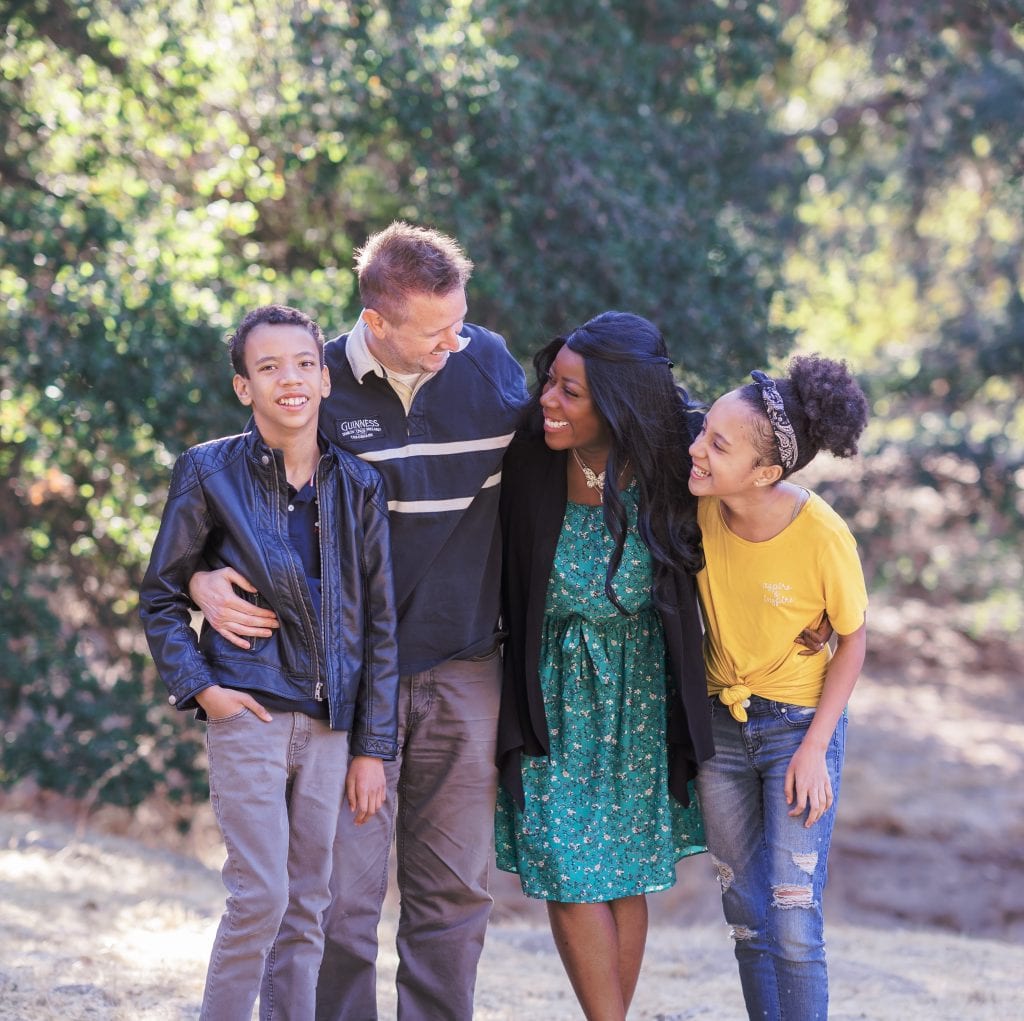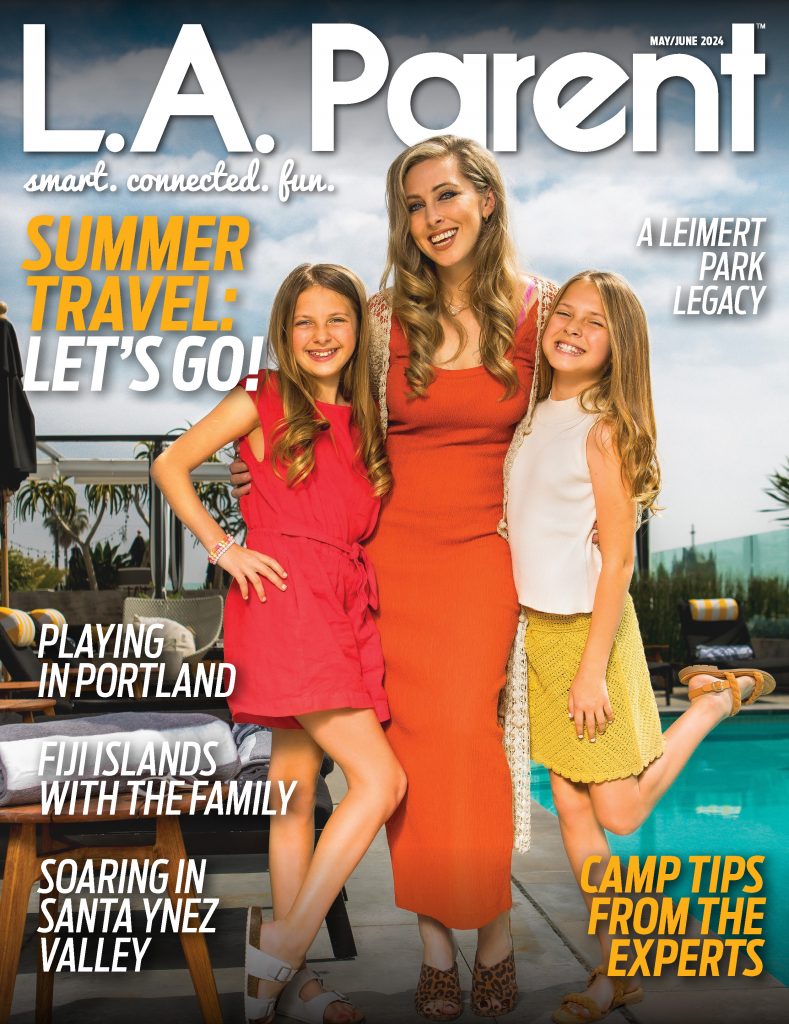
From left, Ash, Lee, Natashia Deón and Ava Saunders share a moment of laughter during a family photo shoot. PHOTO BY BRIENNE MICHELLE
When I met my sister-in-law 10 years ago, I saw the very real necessity to remove barriers for people with disabilities in order to improve their quality of life. My sister-in-law uses a wheelchair, and spending one day out and about with her on L.A. sidewalks and in shopping centers was all it took for me to understand the profound difficulty she has in navigating a world built around the needs of the typically abled. Doorways are too narrow for her to enter. Sidewalks are dangerously buckled. Stairs might as well be steel doors. Because many of us don’t have to face these challenges and barriers, we are unaware of how inaccessibility can chip away at the dignity of those with mobility challenges.
Lee Saunders and his daughter Ava, 13, well understand the needs of families living with a disability. For nearly 11 years, their company, Adapted Living (adaptedliving.com), located in Santa Clarita and serving clients nationwide, has been on a mission “to bring accessibility solutions … and to inspire caregivers and the building industry to create more accessible, beautiful and usable spaces.” Their YouTube video, “How to Make an Accessible Shower Room,” shows Saunders and Ava narrating the process of turning part of a hallway into an accessible bathroom.
Their passion for this work is deeply ingrained in the family DNA. In England, Saunders’s father and grandfather worked in construction, remodeling homes for people with disabilities. He recalls how, at age 11, he helped to remove several steps from a path and replace them with a ramp with a minimal slope to make it possible for an elderly gentleman who used an electric wheelchair to move safely on the slippery winter pavement. The memory of the joy on the man’s face when the project was finished stayed with him. Maybe it is no surprise that Ava would inherit the family heart for good works in the inclusive community.
“Ava is by nature a builder and an artist, and has a softness for both people and animals,” Saunders says. “She’s a Girl Scout and volunteers in the special-needs ministry at our church.”
Witnessing some of the challenges her younger brother, Ash, who has a disability, faces has deepened Ava’s passion for helping people like him and her grandmother who, though her needs are different, also requires adaptable living spaces in order to enjoy quality of life.
And Ava finds plenty of joy in the family business. “It’s fun and it helps me to learn new things,” she says. “Sometimes it can be frustrating if we don’t have the same ideas, but I love to work with my dad.” Working with Ava seems to have come full circle for Saunders. “It’s nice to work together and see her grow as a young lady and watch her learn about business in general,” he says. “I learned from my father, so I can understand it can be frustrating for Ava. Also, I understand how patient he was with me, and it helps me to be patient with her.”
According to a Pew Research Center report, the most common types of disabilities involve difficulties with walking or independent living. These challenges are faced by about 7 percent of the U.S. population, or about 20 million people ages 18 and up. Through Adapted Living, this father and daughter hope to “inspire inclusive homes where diverse families – the typically abled, disabled and aging – can live together in beautiful and accessible spaces,” Saunders says.
Darlene Kriesel is a SoCal-based writer and educator. She holds an MFA in creative writing from University of California at Riverside-Palm Desert. She writes on education, social justice and the family dynamic.

























